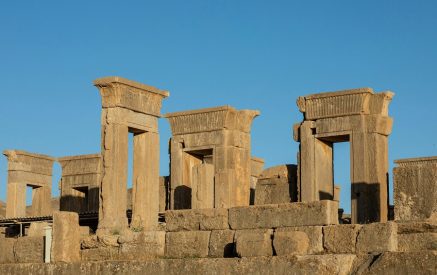Guest Blog by Uzay Bulut
May 16th, 2016
While much of the world has been shaken by the atrocities committed by the Islamic State against non-Muslim communities in Syria and Iraq, a non-Muslim community in Turkey, the Armenians, has for decades been suffering – mostly forgotten and abandoned by the world.
What Ottomans did during the 1915 genocide (and what Turkey is still doing today) is very similar to what the Islamic State is doing. Drawing parallels between the past and the present is of great significance to understand the continuity, universality and horridness of Islamic jihadi genocide.
Read also
Even though it has been 101 years since the 1915 genocide befell the Armenian Christians at the hands of the Ottoman Empire, the few remnant homes, churches and even cemeteries of the victims are still being targeted by both the state authorities and locals in Turkey. Much of the public is also complicit by staying completely silent in the face of these injustices.
Today, the Armenians in their ancient homeland inside Turkey’s boundaries have become almost extinct. But in Turkey, even the dead Armenians are not allowed to rest in peace.
“Dozens of graves have been dug and bones have been taken out,” said Aziz Dagci, the head of the Armenian Minorities Association, who filed a criminal complaint in the city of Muş (pronounced Mush) about the destruction of the graves that date back to the 1800s.
“They should stop digging our graves. There is nothing but our dead in our graves,” he said. “And they should also stop destroying our monastery.”
Much of the world media, however, fails to cover the human rights abuses Armenians and other Christians are subject to in Turkey. Their sole focus seems to be the Islamic State (ISIS/ISIL). Sadly, they fail to see what is done to Armenians and other Christians inside Turkey, a NATO-member nation.
For example, in 2013, 500 historic Armenian houses in the Kale neighborhood of Mus were demolished within the government’s project of “urban renewal.” (See a video of the demolished houses.)
“This obliteration of a culture,” wrote researcher Varak Ketsemanian, “is a consistent policy of the Turkish government; it uses it as a tool of counter-propaganda against any Armenians claims that assert the pre-1915 existence of Armenians on these lands. Although this policy does not include any actual massacres or deportations, it is a continuation of the same policy adopted in 1915.”
Apparently, Armenian cemeteries are intentionally chosen as targets by Turkish authorities or locals.
Again, in 2013 a restaurant was built on the Armenian cemetery in the city of Tekirdag in eastern Thrace.
“During the construction, the bones in the cemetery were scattered all around and some were thrown into trash bins. The gravestones, stolen from the cemetery, were used in the construction of a manhole and Armenian gravestones were found in another infrastructure work,” reported the newspaper Taraf.
Taraf also reported that in the central Anatolian city of Sivas “the Armenian cemetery in the city had been looted during a road construction and human bones were scattered to the roadsides. What happened to the gravestones is still unknown.”
Mus had a vivid Armenian community before 1915. Statistics show that before the genocide, 140,555 Armenians lived in Mus’ 339 villages. There were 299 churches, 94 monasteries, 53 holy sites and 135 schools with 5,669 students. The city is also subject to many Armenian folk songs and stories, including the love song “Gulo,” performed here by the Armenian singer, Hasmik Harutyunyan.
According to the 1917 Ottoman census, however, 99 percent of the Armenians in the region had become “lost.” Apparently, the word “lost” in the Ottoman-Turkish dictionary means “slaughtered” or “deported” – and by the most brutal methods imaginable.
“Some of the children were burnt alive; the others were poisoned or drowned, died from lack of food, or succumbed to diseases,” according to the Armenian Genocide Museum-Institute.
“I am confident,” said Henry Morgenthau, the U.S. Ambassador to the Ottoman Empire (1913-16), “that the whole history of the human race contains no such horrible episode as this. The great massacres and persecutions of the past seem almost insignificant when compared with the sufferings of the Armenian race in 1915.”[i]
Most Armenians have been wiped out from Mus, as well as the rest of Turkey. “[Officially] there are 3,000 Armenians in Mus now, but the locals say that there are more,” said the director of the Study Center for Western Armenian Issues, Haykazun Alvrtsyan in 2014, who added, “There are at least 2.5 million ‘Muslim Armenians’ in Turkey, half of whom are hiding.”
Given the boundless intolerance against everything reminiscent of Armenians in Turkey, the “hidden” Armenians seem to have justifiable reasons not to reveal their ethnic or religious identity.
In a country where even the bones and cemeteries of Armenians are not respected, being an Armenian is a considerable hardship to live with every day.
[i] “The Armenian Genocide: The Essential Reference Guide”, by Alan Whitehorn, Publisher: ABC-CLIO, 2015.
Uzay Bulut is a Turkish journalist formerly based in Ankara. She is presently in Washington, D.C. Follow her on Twitter at twitter.com/uzayb























































